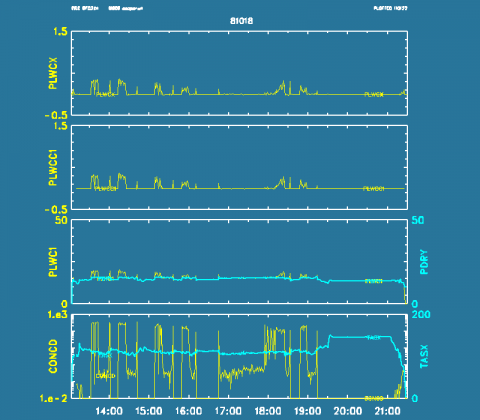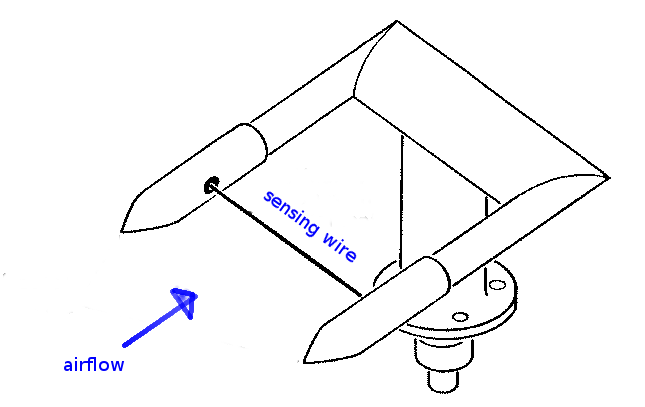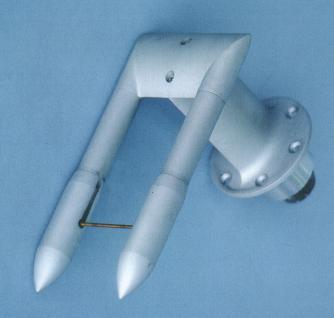King (CSIRO) Liquid Water Sensor
Short Name or Variable Name
King Probe
- The CSIRO King Probe was first described in the literature in 1978 by Warren King (King, W. D., D. A. Parkin, and R. J. Handsworth, 1978: A hot-wire liquid water device having fully calculable response characteristics. J. Appl. Meteorol., 17, 1809-1813). The response characteristics were further characterized by Bradley and King, 1979 (2 .Bradley, S. G., and W. D. King, 1979: Frequency response of the CSIRO Liquid Water Probe. J. Appl. Meteorol., 18, 361-366). A schematic showing the instrument configuration is shown in the next figure, and the following figure shows a photograph of the sensor:
- The sensing element consists of a wire wound helically to form a cylindrical element about 2.1 cm long and 0.18 cm in diameter. The resistance of this element, exposed to the airstream as shown in the figure above, changes with temperature. The electronic circuitry adjusts the power dissipated by the wire in order to maintain the sensing element at a constant resistance and hence constant temperature. Some baseline power is required to maintain the set temperature in clear air, but additional power is required in the presence of liquid water. The additional power required to maintain a constant temperature in cloud is then used to measure the liquid water content striking the wire.
Measurements Provided: Cloud liquid water content
Measurement Characteristics:
- Overall estimate of uncertainty: 15% + 0.02 g/m^3 (typical), the latter for baseline drift in clear air.
- Response time: 5ms if the diameters of cloud droplets are less than 16 micrometers (Bradley and King, 1979)
- Precision: <0.01 g/m^3, limited primarily by fluctuations in the "dry" term described below.
- Other measurement characteristics (comments on signal/noise, bias limits, etc): A bias arises from incorrect estimation of the heat loss expected in the absence of cloud water. This is removed by adjustment of the dry-air term in processing (below) using another instrument like a cloud spectrometer to indicate when there is no cloud water.
Example(s) of Measurements: Measurements from VOCALS flight RF02: CONCD is the concentration measured by a Cloud Droplet Probe, TASX is the true airspeed, PLWC1 is the power measured by the King Probe, PDRY is the estimate of the power required in dry air, PLWCC1 is the standard LWC in the processed file, and PLWCX is the liquid water content produced by the new processing used beginning in 2012, as described in the wiki note referenced above.

Calibration Methods
Primary External Contacts
Bill Dawson, DMT
Lead Contact
Sarah Woods

